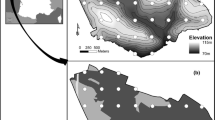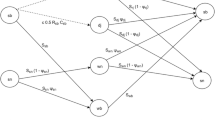Abstract
Breeding density, local survival and summer recruitment of nuthatches were evaluated in a population scattered over many small (1–30 ha) forest fragments, and compared with study plots inside larger forests. Since most young birds settle outside the fragment in which they were born this population corresponds to the “patchy population” concept implying that patterns in abundance may be better explained by processes at the population level than by metapopulation processes. Mean breeding density was c. 50% lower in fragments and decreased with regional isolation (distance from larger forests) but not with local isolation (distance to nearby fragments). Local survival of adults and established (i.e. territorial) 1st-year birds was not related to forest size or isolation. However, fewer young birds settled in summer in the fragments compared with a large forest. This difference probably reflects high mortality during the sensitive dispersal phase. Moreover, the observed number of recruits and their estimated survival was insufficient to maintain the breeding population, suggesting significant net immigration from larger forests. This “rescue effect” explains why densities are affected by regional, but not local isolation.
Similar content being viewed by others
Author information
Authors and Affiliations
Additional information
Received: 14 December 1998 / Accepted: 1 March 1999
Rights and permissions
About this article
Cite this article
Matthysen, E. Nuthatches (Sitta europaea: Aves) in forest fragments: demography of a patchy population. Oecologia 119, 501–509 (1999). https://doi.org/10.1007/s004420050813
Issue Date:
DOI: https://doi.org/10.1007/s004420050813




